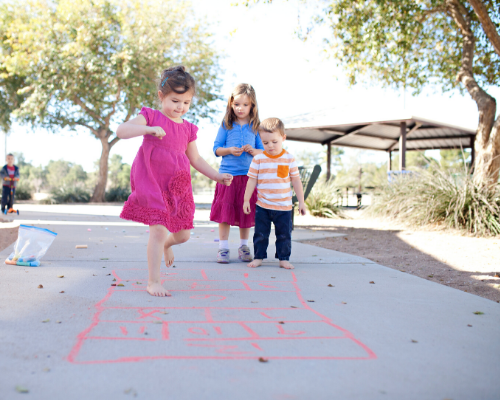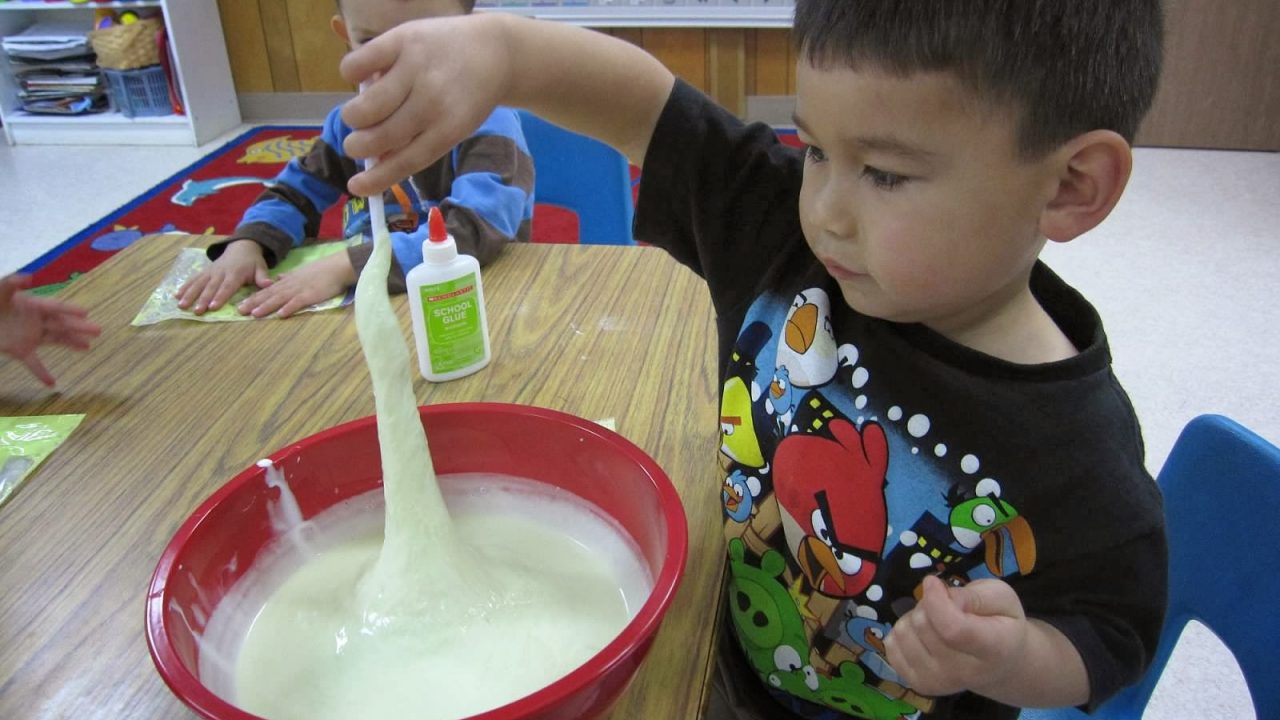
- Blogs
Outdoor Activities to Challenge Preschoolers
With most schools closed and children forced to stay home, many little ones are beginning to realize how important school is for them. While many preschool activities are widely available to keep children busy and learning, they often yearn to be outdoors. With our long winter over (at least in most places) preschoolers are eager to get out and play in the yard and driveway.
While it’s important that children let off steam and their pent-up energy, how can we make outdoor activities part of learning? Here are several activities that are fun and reinforce learning and curiosity.
Hopscotch. Children love to play with chalk and adorn their driveways with various pictures. However, hopscotch is more than a game as children learn about making a square (equal sides) and reinforce concepts of size, terminology and numeracy. Take a yard stick and have the children decide how big the square is going to be. Then chalk the lines to make a square and then repeat the action to make a one, two, three, one, two configuration. Number the boxes. If children know how to write numbers, have them do this task. The leader then calls out the number until the last square is reached and then starts again for the next jumper. Preschoolers can probably count to five so this game reinforces that learning. For those who find larger numbers unfamiliar this is an excellent learning opportunity. Let everyone have two turns and then move on to another activity coming back to hopscotch another time.
Skipping Rope. This combines exercise, dexterity and numeracy. Explain that individuals can skip rope holding both ends or there may be two helpers each holding one end. Have two children practice how to make the rope circle, being careful not to hit the ground. The skipper then takes a turn. Make a chart out of chalk on your driveway and list each child who will be jumping rope. Chalk the number of skips on the chart and continue with the next skipper. If this activity is done again later or the next day, use that same chart so children can see how they improve. It’s important to let children know that skipping is a skill that takes a lot of practice so they shouldn’t be upset if they don’t do many skips in a row. You can show them how, with practice, they become more proficient.
Animals in the Yard and Neighborhood. Whether you live in the city, suburbs or rural areas, animals abound. Take a walk around your block (taking care to social distance, of course.) Look carefully for animals. What do you see? If you can, take photos of the animals you see. You may see rabbits, a deer, wild turkey, dog, cat, squirrels or chipmunks. When you get home print out your photos and paste them on a board. Write the name of the animal underneath with the number you saw. If you don’t have photographs, draw each animal. When you go for a walk again it’s likely that you will see a different variety of animals, which you can then chart and compare to other walks results.
Worms. After it rains go out to your driveway and see what you find. You will probably find quite a few worms-some living, some dead and of all different lengths. Take a ruler and note the length of the worms. Chart the numbers of worms and their lengths.
There are countless other ways to introduce learning concepts into your regular outdoor playtime activities. Now is a great time to get creative and help children get their energy out while also having valuable learning opportunities.
Share This Story:
Related Stories
Doing Science to Make Fun Stuff
February 16, 2021
Blogs
Take a walk! Learn about autumn through all five senses
November 6, 2020
Blogs
Christmas Activities for Secular & Non-Secular Preschools
December 29, 2019
Blogs



